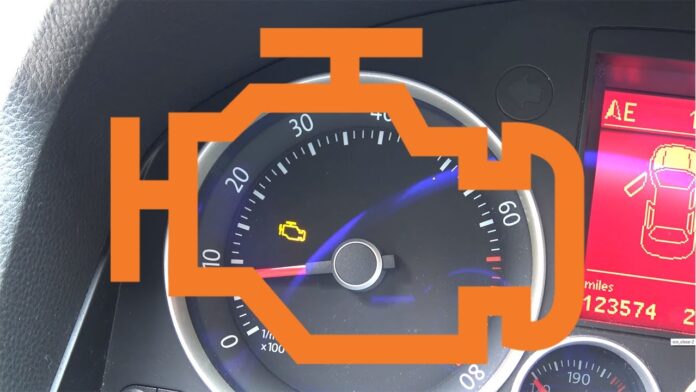Introduction to the OBD-II System and Why It Was Developed
The On-Board Diagnostics II (OBD-II) system represents a crucial advancement in automotive technology, providing standardized methods for vehicle diagnostics. Developed in response to regulatory pressures aimed at reducing automobile emissions, the OBD-II system first became mandatory for all vehicles sold in the United States starting in 1996. This system allows for a uniform approach in diagnosing issues pertaining to engine performance and emissions, thereby fostering improved environmental protections.
The primary objective of the OBD-II system is to monitor the performance of various vehicle systems, specifically those related to emission control. By continually assessing data from different sensors and components, the OBD-II system can detect malfunctions that may lead to increased emissions or degraded performance. For instance, if the engine experiences a fault, the OBD-II system triggers the check engine light on the dashboard, alerting the driver to potential issues that require attention.
Furthermore, the significance of the OBD-II system extends beyond just emissions control. The implementation of OBD-II codes allows for enhanced vehicle performance monitoring, equipping mechanics and technicians with the necessary information to diagnose problems accurately and efficiently. Each diagnostic trouble code (DTC) generated by the OBD-II system corresponds to a specific fault, aiding in rapid identification of concerns and facilitating timely repairs. This standardized diagnostic process improves service efficiency, leading to safer and more reliable vehicles.
In essence, the development of the OBD-II system and its incorporation into modern vehicles marks a significant milestone in automotive diagnostics. It has paved the way for comprehensive monitoring of vehicle performance while providing essential data that assists both drivers and technicians in understanding and resolving issues effectively.
Common Misconceptions About Check Engine Lights
The check engine light (CEL) is one of the most misunderstood indicators on a vehicle’s dashboard. Many car owners mistakenly believe that its illumination solely signifies a severe mechanical failure or major engine malfunction. This misconception can lead to undue stress and anxiety, as well as increased risk of vehicle damage if issues are neglected. However, a check engine light can be triggered by a wide range of issues, including something as simple as a loose gas cap. Understanding this spectrum of potential triggers is crucial for accurate interpretation of what the light indicates about a vehicle’s health.
Another prevalent myth is the belief that the check engine light will eventually resolve itself if ignored. While there are instances where the light may turn off after a minor issue resolves, one must resist the temptation to dismiss the warning. Ignoring the check engine light can allow small, manageable problems to escalate into more significant, costly repairs. It’s imperative that vehicle owners recognize that a continual glow indicates a need for immediate attention, regardless of the apparent severity of the issue.
Additionally, some individuals assume that the check engine light will distinguish between serious and minor issues. This is not accurate, as the light serves as a blanket alert for various malfunctions across multiple systems within the vehicle. From issues related to the emissions system to trouble with the fuel system, the check engine light alerts drivers to consult a professional for diagnostics. While the exact meaning of the light is often complex, with the help of an OBD-II scanner, drivers can obtain specific trouble codes that pinpoint the underlying issues effectively.
In summary, debunking these common misconceptions surrounding the check engine light is vital for maintaining vehicle health. Understanding the importance of immediate action, rather than hastily concluding the nature of the problem, is essential for any responsible vehicle owner.
Top 10 Most Frequent Codes and What They Indicate
The Check Engine Light (CEL) serves as a vital communication tool for vehicle owners, alerting them to potential issues within the engine or related systems. Diagnostic Trouble Codes (DTCs) are standardized codes that help in identifying specific problems. Here, we explore the top 10 most frequent codes and what they signify.
P0442 – Evaporative Emission Control System Leak Detected (small leak): This code suggests that the engine’s evaporative emissions system has detected a small leak, often from a gas cap that is not securely tightened. Ignoring this can lead to increased fuel vapor emissions and potential long-term damage to the fuel system.
P0301 – Cylinder 1 Misfire Detected: A misfire can significantly affect engine performance and fuel economy. This code typically indicates issues such as faulty spark plugs, fuel injectors, or ignition coils. Immediate attention is crucial to prevent further engine damage.
P0420 – Catalyst System Efficiency Below Threshold (Bank 1): This code indicates that the catalytic converter may not be functioning correctly. A faulty catalytic converter can impact vehicle emissions and efficiency, potentially leading to expensive repairs if left unaddressed.
P0171 – System Too Lean (Bank 1): This code means that the fuel-to-air ratio is too lean, usually due to issues like vacuum leaks or a failing mass airflow sensor. Addressing this promptly can prevent further complications, such as poor engine performance.
P0132 – O2 Sensor Circuit High Voltage (Bank 1 Sensor 1): A malfunctioning oxygen sensor can lead to inaccurate readings, affecting fuel economy and emissions. Timely replacement of the sensor is necessary to maintain optimal vehicle performance.
P0455 – Evaporative Emission Control System Leak Detected (gross leak): A significant leak in the EVAP system is indicated by this code. Common issues can include a broken gas cap or compromised EVAP hoses, necessitating immediate investigation to avoid emissions violations.
P0300 – Random/Multiple Cylinder Misfire Detected: This code signifies that multiple cylinders are misfiring, impacting engine performance and stability. It may point to widespread issues, including fuel system failures, and requires prompt resolution.
P0128 – Coolant Temperature Below Thermostat Regulation: This code often indicates a malfunctioning thermostat, leading to improper engine temperatures. Over time, it can affect engine longevity if not fixed.
P0401 – Exhaust Gas Recirculation Flow Insufficient Detected: This code suggests that the EGR system isn’t functioning efficiently, often due to blockages or faulty components. Correcting this issue is necessary to maintain emission control.
P1682 – Key Not Detected: This less common code indicates issues with the ignition system, often linked to a faulty key or ignition switch. Addressing this quickly is essential for your vehicle’s operation and reliability.
Understanding these common codes is crucial for effective vehicle maintenance. By recognizing the signs early, vehicle owners can take appropriate actions that not only enhance performance but also ensure safety while on the road.
When You Can Safely Drive with the Light On vs. When to Stop Immediately
The check engine light (CEL) serves as an essential warning system in vehicles, alerting drivers to potential issues. However, the severity of the problem indicated by the light can vary significantly. Understanding when it is safe to continue driving and when to cease operation immediately is crucial for the vehicle’s health and the driver’s safety.
In cases where the check engine light illuminates, a few initial indicators can help assess the severity of the situation. If the light is on but not flashing, it often indicates a non-emergency problem. For instance, this may involve minor issues such as a loose fuel cap or a need for routine maintenance. Drivers experiencing no noticeable symptoms, such as unusual noises, decreased power, or diminished fuel efficiency, may proceed cautiously. However, keeping track of the vehicle’s performance is important, and scheduling a diagnostic check as soon as possible is advised.
Conversely, if the check engine light begins to flash, this signals a more serious issue. It often suggests that there is a significant problem, such as engine misfire, which could lead to major damage if ignored. In such instances, stopping the vehicle immediately is imperative. Continuing to drive under these conditions could exacerbate the issue, leading to costly repairs and potentially dangerous situations on the road.
To enhance risk management, drivers should also be attentive to other symptoms. For example, if warning indicators such as oil pressure or temperature gauges exhibit irregular behavior, or if strange smells accompany the warning light, these could be indicators of serious malfunctions that require immediate attention. Recognizing these signals can help prevent further damage and improve safety overall.
DIY Tools for Reading Codes and Their Limitations
In the realm of vehicle maintenance, the ability to read diagnostic codes through various DIY tools has become increasingly accessible to the average car owner. One of the most common tools used for this purpose is the OBD-II scanner. These handheld devices plug directly into a vehicle’s onboard diagnostics port, which allows users to retrieve trouble codes generated by their car’s computer system. Many OBD-II scanners are user-friendly and come equipped with a display that shows basic error codes along with brief descriptions, making it easier for individuals to understand the potential issues.
In addition to traditional OBD-II scanners, there are now mobile applications available for smartphones that provide similar functionalities. These apps often require a Bluetooth OBD-II adapter, which connects the mobile device to the car’s diagnostic port. This modern solution not only allows for code reading but also enables users to monitor real-time data, such as engine temperature and RPM. However, the effectiveness of these apps can vary significantly based on the phone model and the specific vehicle.
Despite the convenience of these tools, there are inherent limitations when relying solely on DIY diagnostics. For instance, while scanners and apps can read error codes, they may not provide comprehensive information about the underlying causes or necessary repairs. Users may find themselves facing obscure codes that require professional interpretation or additional diagnostic steps. Furthermore, the ability of these tools to access all the various systems in a modern vehicle can be limited, especially in vehicles equipped with advanced technology. Therefore, while DIY tools serve as a great starting point, users should be prepared to seek professional assistance for accurate diagnostics and repairs.
When It’s Time to Call a Professional
Understanding the nuances of your vehicle’s diagnostic codes can be a daunting task, especially for the average car owner. While some minor issues can be effectively addressed through DIY diagnostics, certain signs indicate that it is time to consult a trained professional. Recognizing these signs early can prevent further complications and potential damage to your vehicle.
One crucial indicator is the persistence of the check engine light, even after performing basic troubleshooting steps. If the light reappears shortly after resetting or if it remains illuminated despite attempts to address the underlying issue, this often signals a more complex problem that requires specialized knowledge. Additionally, unusual sounds, vibrations, or performance drops accompanying the warning light suggest that the issue may extend beyond simple fixes. These symptoms may indicate significant engine or transmission issues, which necessitate immediate attention from a qualified mechanic.
Furthermore, if you encounter multiple dashboard warning lights alongside the check engine light, this may point to a broader electrical problem or system failure that demands a professional assessment. In such instances, an experienced mechanic can utilize advanced diagnostic tools to pinpoint the exact cause and recommend appropriate repairs.
Another aspect to consider is the age and model of your vehicle. Older cars may display codes that are unclear or require extensive knowledge of specific parts that are no longer in production. A professional mechanic can provide insights into these nuanced issues, drawing from their experience and training.
Ultimately, while DIY diagnostics can be an excellent initial step in car maintenance, recognizing when to seek professional help is essential. Consulting a trained expert can save time, reduce costs, and ensure that your vehicle remains in optimal condition.
Real Case Study: How a Simple Gas Cap Saved a Customer $800
In an illuminating case study, a vehicle owner encountered the perplexing check engine light that illuminated unexpectedly on their dashboard. Initially dismissing it as a minor inconvenience, the customer chose to ignore the light for several days. However, given the vehicle’s performance began to deteriorate, they opted to visit a trusted mechanic for a professional assessment. The mechanic’s diagnosis revealed an interesting twist: a loose gas cap had triggered the check engine light.
While it may seem trivial, a loose or faulty gas cap can cause significant issues in an automobile’s fuel system. A damaged cap can lead to fuel evaporation, which not only impacts fuel efficiency but also raises environmental concerns due to increased emissions. The mechanic, on detecting the issue, quickly secured the gas cap, resetting the onboard diagnostics system in the process. This quick fix not only restored the vehicle’s optimal performance but also eliminated the risk of incurring larger expenses down the line.
Had the customer continued to neglect the check engine light, they potentially faced issues leading to major repairs. Symptoms could have escalated, warranting costly diagnostics and replacements exceeding $800. This scenario highlights the importance of attending to even seemingly inconsequential alerts from the check engine light. Ignoring such warnings can lead to significant financial implications and additional mechanical failures that could compromise the vehicle’s integrity.
Moreover, this case underscores the necessity of routine vehicle maintenance and the beneficial practice of addressing minor problems before they evolve into larger, costlier issues. Vehicle owners should remain vigilant, recognizing that a simple action—like checking the gas cap—could save them a substantial amount of money while ensuring their vehicle operates efficiently.
About the Author: Mateo Cruz is a Los Angeles-born car designer and certified master mechanic with a passion for breathing new life into classic automobiles and pushing the boundaries of performance in street-legal racers. When he’s not in his workshop creating automotive art, he’s sharing his knowledge with the next generation of gearheads through hands-on workshops and community programs. Got questions about your own project? Drop a comment below or join one of my upcoming restoration workshops. Keep those engines roaring!


